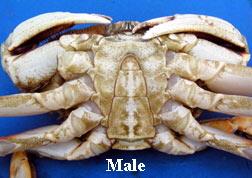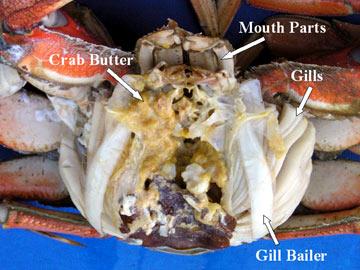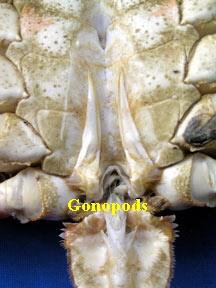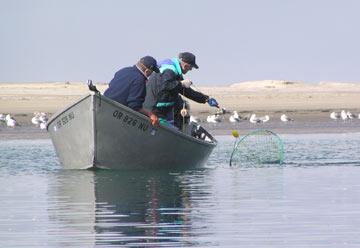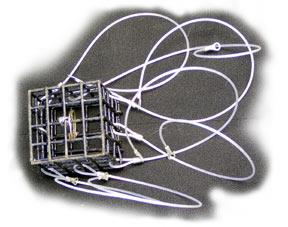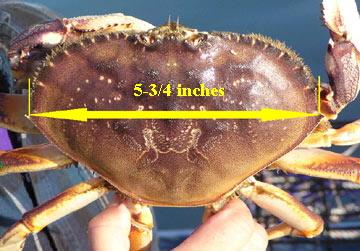A license is required in Oregon for all shellfish, including crabs. Three traps, rings, or lines are allowed per person. The current catch limit is 12 male crabs per day with no more than two limits in possession. You are not allowed to keep females. The minimum size is 5-3/4 inches as measured by a caliper. Size is measured across the back, immediately in front of, but not including, the points as shown in the figure. Check for additional regulations in the Oregon Sport Fishing Regulations published yearly by Oregon Fish and Wildlife
Red Rock Crabs. Another tasty, but smaller, crab related to the Dungeness is the red rock crab, Cancer productus, which can be identified by its brick red shell. It prefers a rocky habitat, but can be caught on soft bottoms as well. The current catch limit is 24 crabs of any size or sex.
Cooking crabs. Crabs are usually boiled or steamed for about twenty minutes. Many people prefer seawater or one-to-one seawater to freshwater for boiling. Alternatively, you may add salt to tapwater. If you find plunging a live crab into boiling water distasteful, you can kill it first by hitting it solidly on the underside, just above the point of the abdomen, with a blunt object. This is the location of the thoracic ganglion, a nerve center, and it is equivalent to whacking the crab on the head, if it had a head. You can even clean your crab before cooking. Clean crabs by separating the carapace from the body by pulling it upward from the backside. Remove the viscera, gills, gill bailers and cleaners, the mouth parts, and the abdomen. Save the crab butter if you like, but again we recommend not eating it. Rinse the remaining crab with a spray of cold water until it's clean.
A good recipe book is "Crab" by Cynthia Nims (2002), Northwest Homegrown Cookbook Series, West Winds Press, Portland, Oregon.


